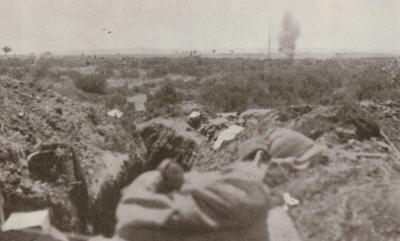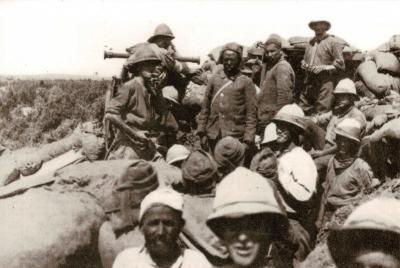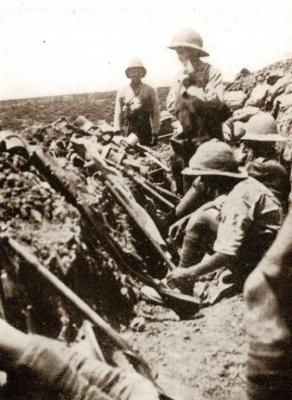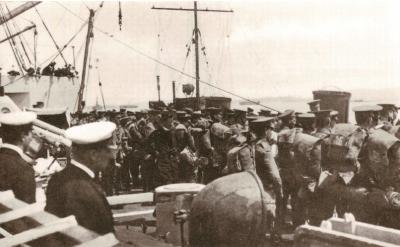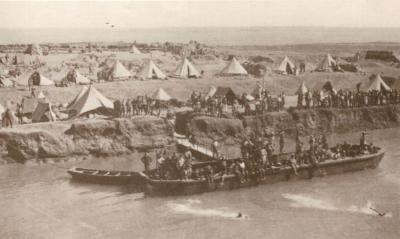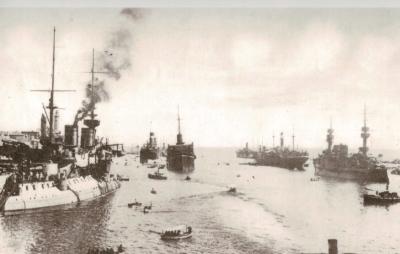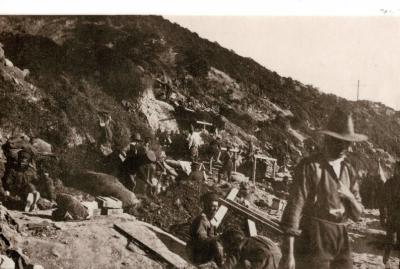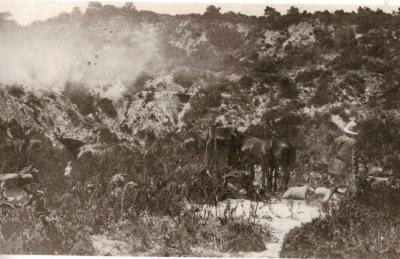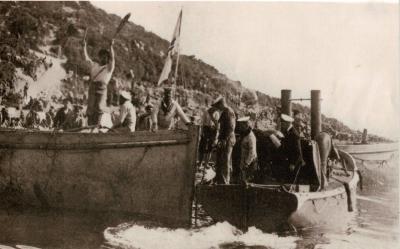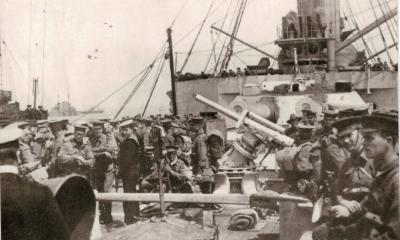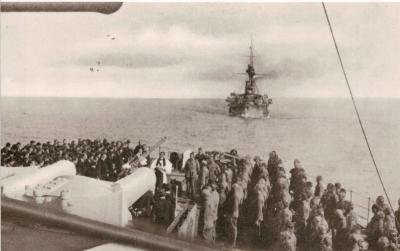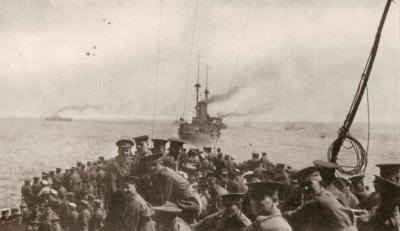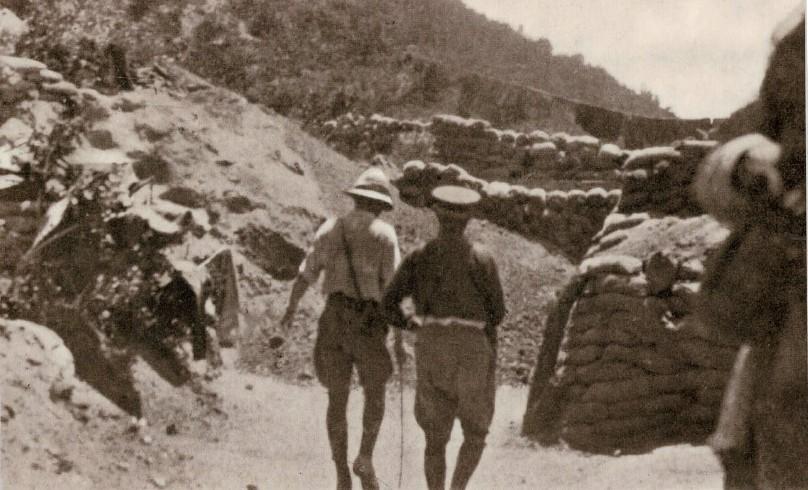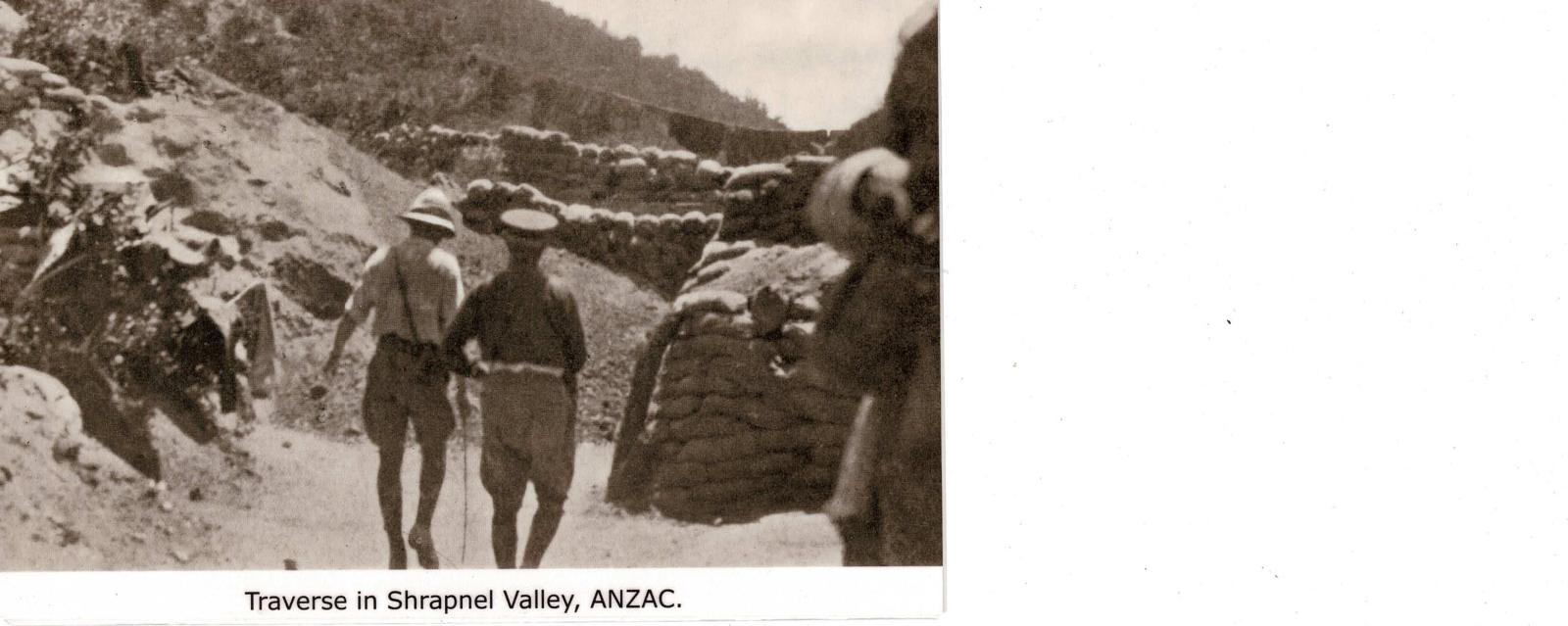World War 1, Eastern Mediterranean, Gallipoli, Anzac Cove, Shrapnel Valley, 1915
Traverse-in-Shrapnel-Valley--Anzac
Shrapnel Valley was the main route up from the beach area to the Anzac frontline to the famous posts - Quinn's, Courtney's and Steele's Posts. Further upthe valley splits in two. Off to the right, behind the posts, runs Monash Valley called after Brigadier General John Monash, commander of the 4th Australian Infantry Brigade.
Shrapnel Valley (sometimes called Shrapnel Gully) got its name in the early days after the landing. As the Turks realised that this had become the highway to the front their guns rained shrapnel shells down upon this area. These shells made a particular whistle before they burst showering those below with lethal pellets. It was said that as the shells could be heard coming soldiers passing through the valley had the chance to take cover. Confronted with such danger, Bean wrote that men became 'fatalists' and thought that a particular shell had a man's name and number on it! - 'Until that shell arrived, it was best to let others see them going proudly rather than flinching'.
Many an Anzac was introduced to war as he moved up these valleys to the ridge. For virtually the whole of the campaign, but especially in the early weeks, further up Shrapnel Valley where it turned to the right and became Monash Valley, Turkish snipers killed or wounded hundreds of men. The Turks held the high ground at places like Dead Man's Ridge and the Bloody Angle and were never driven from it. Stretcher-bearers, and soldiers bringing up supplies, rations and water, were in constant danger as they made their way along the valley bottom. This sniping was at its worst during the early hours of daylight when the sun was behind the Turkish marksmen.
It was while doing his duty in Monash and Shrapnel valleys on 19 May 1915 that the best known Anzac of all - 'The Man with the Donkey - met his death. There were any number of stretcher bearers all over the Anzac position who daily saved men's lives while constantly endangering their own. Nevertheless, it is the story of Simpson and his work with donkeys in Shrapnel Valley which over the years has grown to be almost the story which Australians know about Anzac.
Details
Details
Australian Army Museum of Western Australia
Australian Army Museum of Western Australia
Other items from Australian Army Museum of Western Australia
- World War 1, Eastern Mediterranean, Gallipoli, Anzac Cove, 1915
- World War 1, Eastern Mediterranean, Gallipoli, Anzac Cove, 1915
- World War 1, Eastern Mediterranean, Gallipoli, Cape Helles, 1915
- World War 1, Eastern Mediterranean, Gallipoli, Anzac Cove, HMS London, 1915
- World War 1, Eastern Mediterranean, Egypt / Gallipoli, Suez Canal, 1915
- World War 1, Eastern Mediterranian, Egypt / Gallipoli, Suez Canal, 1915
- World War 1, Eastern Mediterranean, Gallipoli, Anzac Cove, 1915
- World War 1, Eastern Mediterranean, Gallipoli, Cape Helles, 1915
- World War 1, Eastern Mediterranean, Gallipoli, Anzac Cove, 1915
- World War 1, Eastern Mediterranean, Gallipoli, Anzac Cove, HMS London, 1915
- World War 1, Eastern Mediterranean, Gallipoli, Anzac Cove, HMS London, 1915
- World War 1, Eastern Mediterranean, Gallipoli / Mudros Bay, 1915
